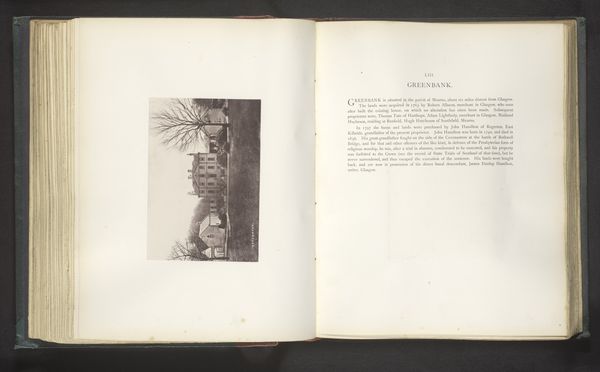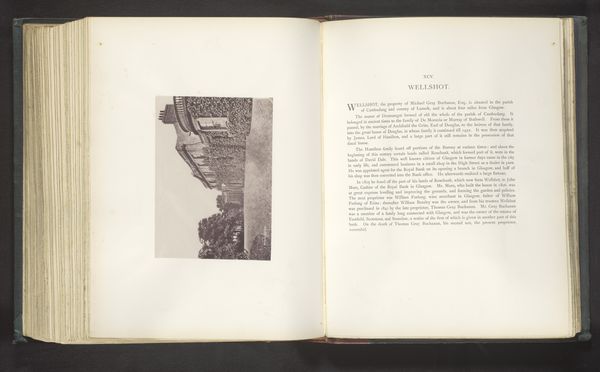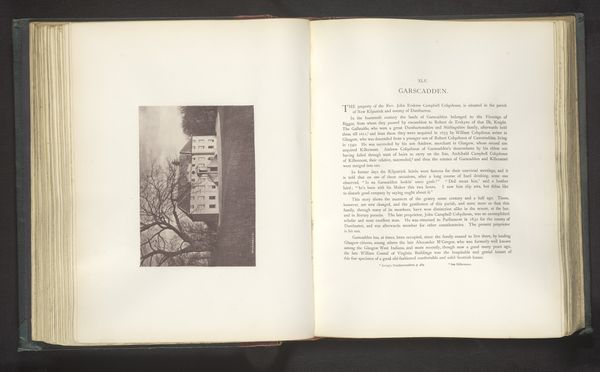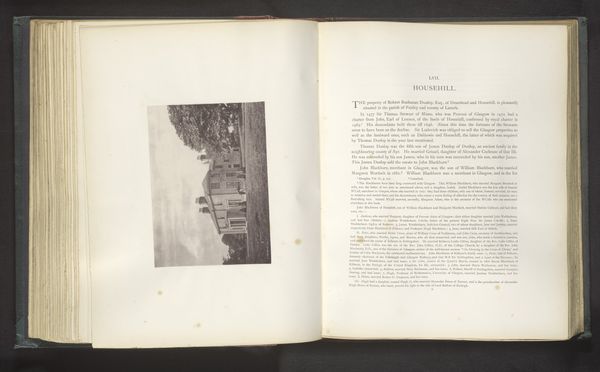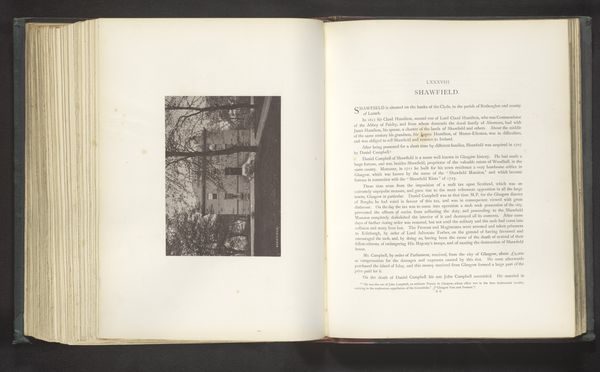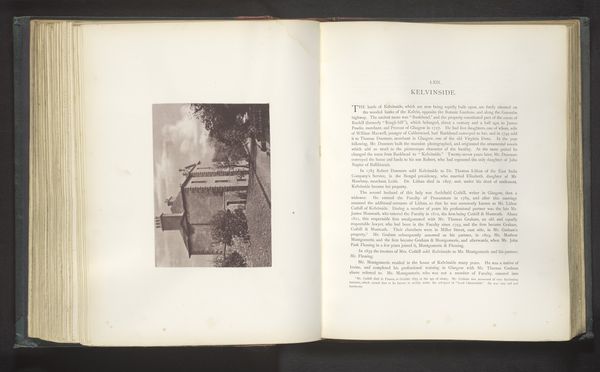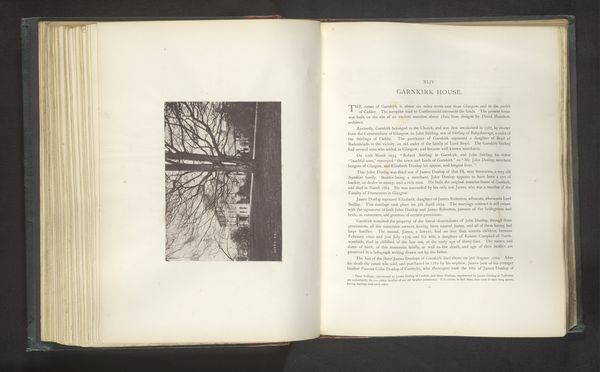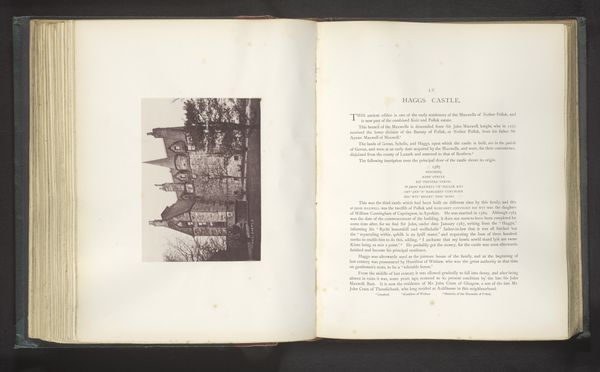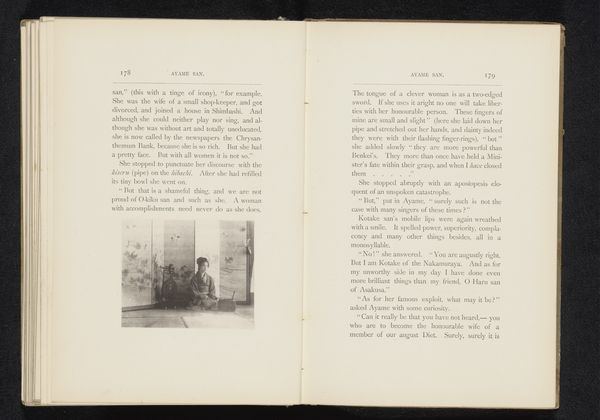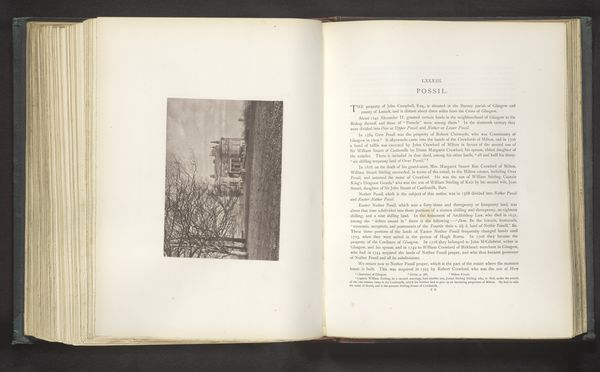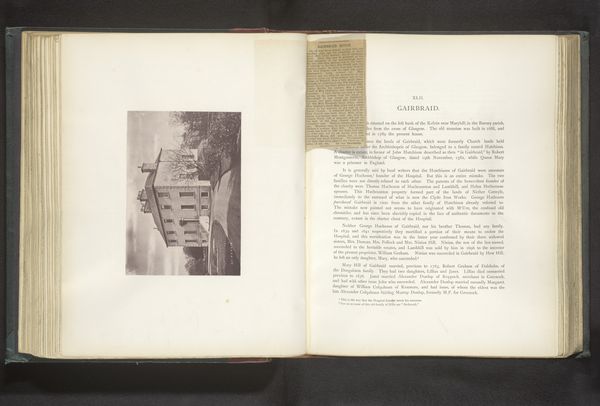
print, photography, albumen-print
# print
#
landscape
#
photography
#
albumen-print
#
building
Dimensions: height 115 mm, width 160 mm
Copyright: Rijks Museum: Open Domain
Editor: Here we have “Garscube,” an albumen print by Thomas Annan, dating to before 1878. It's part of a larger book spread, but this particular print catches my eye with its striking contrast between the grand building in the background and the figure in the foreground. It seems to position the viewer at an interesting intersection of class and identity. What do you see in this piece, from your perspective? Curator: This photograph operates within a complex socio-political context. Annan's work, especially his documentation of Glasgow's slums, was often driven by reformist ideals, reflecting a tension between documenting social issues and aestheticizing them. Here, we might consider how the positioning of the figure in relation to the grand Garscube estate speaks to power dynamics. Is this individual a resident, a worker, an outsider? How might gender, class, and access be relevant in analyzing this print? Editor: That's interesting, I hadn't thought about the photographer's role as almost a social reformer. I wonder, does the landscape genre itself have any inherent biases that influence the reading of a work like this? Curator: Absolutely. Landscape photography, often framed as objective documentation, can be deeply implicated in narratives of land ownership, colonial expansion, and the erasure of indigenous presence. In the context of 19th-century Britain, representations of country estates, like Garscube, were also wrapped up in asserting aristocratic dominance and legitimizing land enclosures. Examining the formal elements, such as composition and lighting, can unveil the artist’s intent and potential ideologies at play. Do you see how Annan frames the composition? Is it glorifying the Estate, or presenting a contrasting narrative? Editor: I notice that the figure dominates the foreground but looks away from the estate. I also see that the building is shot from an oblique angle rather than dead-on; these elements maybe suggest ambivalence about traditional power structures. Curator: Exactly! By drawing connections between art historical context and critical theory, we start to unlock deeper meaning in works like these. Understanding historical power structures, their potential presence in artistic work, allows for complex discourse around even seemingly 'simple' art pieces. Editor: This gives me a lot to think about regarding the relationship between art and social justice. Thanks for the insight.
Comments
No comments
Be the first to comment and join the conversation on the ultimate creative platform.
